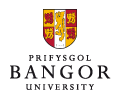- Home Page
- Composting
- Decomposition
Aims
Feedstock and Compost Mixes
Compost Production and Application - Land Restoration
- Quarry Sites
Urban Brownfield Sites
Mine Sites
Colliery Sites - Restoration results
- Quarry site - Blaenau Ffestiniog
Urban Brownfield site - Shotton
Mine site - Greece
Colliery site - Woolley Colliery - Dissemination and Publications
- Forthcoming Events
Previous Events
Open Days
TWIRLS Newsletters
Scientific Publications
Media Archive
Best Practice - Manuals and Tools - Information Services
- Best Practice - Manuals and Tools
- Our Staff

TWIRLS: Treating Waste for Restoring Land Sustainability
TWIRLS: Treating Waste for Restoring Land Sustainability

Site Highlights
- Download the newly published Layman's Report and the TWIRLS Best Practice Manual
- Find out what the team got up to in our News section...
- Find out the Open Days we held and the Events we attended
- Find out more about our dissemination activity and outputs
- Take a look at our Site Diaries
- Find out more about our partners in this project
The TWIRLS project came to a close in September 2007. We'd like to thank all those involved in the project, especially our funders and collaborators. We've recently updated this site to provide easy access to the results of our activities.
The Treating Wastes for Restoring Land Sustainability (TWIRLS) was a project conerned with improving, restoring or remediating degraded land in Europe, using locally sourced waste materials. These materials can be mixed together for the sustainable production of a growing medium, enabling plants to become established and a whole ecosystem to develop.
The project was funded by the European Commission LIFE-Environment programme between October 2004 and September 2007, and managed in the College of Natural Sciences at Bangor University,Wales. Partner organisations and collaborators in the project were: the quarrying companies Alfred McAlpine Slate (in Wales) and Titan Cement (in Greece), the paper manufacturer UPM Kymmene UK (in Wales), the Soil Science Institute of Athens, the Association of Communities and Municipalities of the Attica Region (ACMAR), the waste-management company Envar (in England), and the Welsh Assembly Government.
This work is important for three reasons. There is now a pressing need to:
- reduce the volume of waste disposed of by landfill. Europe produces approximately 2000 million tonnes of waste per year – a figure that is increasing by around 10 per cent each year. Stricter European legislative targets are reducing the amount of waste that can be sent to landfill, and we have an environmental responsibility to recycle more of our waste.
- protect and improve soil. More than 16 per cent of the EU’s total land area is considered to have degraded soil, in terms of erosion, water infiltration or carbon sequestration, or its fertility or microbial biodiversity.
- reduce greenhouse gas emissions. Significant reductions in the EU’s emissions are required following the commitments generated by the Kyoto Protocol and the 2007 climate summit in Bali. Improved waste management can make a cost-effective contribution to meeting these targets.
Adding organic matter to soil improves its quality and functionality. The process has long been recognised as beneficial to the soil’s fertility, structure, water retention and buffering capacity (the ability to resist rapid changes in pH). Organic matter has large pore spaces, which improve water, gas and nutrient flows, and its particles have a large, highly charged surface area, which can adsorb, or ‘attract’, nutrients and trace elements, helping to prevent them leaching away and improving their availability to plants. Organic matter is particularly beneficial to microorganisms as it supplies energy for growth as well as providing a longterm supply of nutrients such as nitrogen, phosphorus and sulphur.
Soil degradation can occur for a number of reasons, including: contamination by pollutants from industry or agriculture; intensive agriculture (especially the production of cereals); disturbance, such as mining or quarrying; and industrial development, which seals the soil with an impermeable surface layer.
Project activities
The TWIRLS project worked with four sites suffering from a range of soil degradation issues.
- The waste rock tips of a slate quarry in Blaenau Ffestiniog, NorthWales, which had no soil or vegetation.
- An urban brownfield area in North Wales, the site of the former Shotton Steelworks, which had some areas contaminated with persistent organic pollutants, and other sandy areas supporting little vegetation.
- A former coal mine,Woolley Colliery, where colliery shale made the soil so acidic that it prevented revegetation.
- Kamariza schist quarry in Greece, part of the Parnitha National Park, where the ground had become
compacted and waterlogged and had no soil or vegetation.
Urban brownfield sites are potentially important refuges for a variety of insects and a key concern of the TWIRLS project is to establish whether the addition of composted organic wastes to brownfield sites has a positive or negative effect on insect biodiversity. In addition to calculating the abundance and diversity of ground dwelling beetles at our urban brownfield site in Shotton, we have compiled a database consisting of high quality digital photos of each species found.
Site Diaries
We've been busy at our experimental sites and you can read about our recent activities in our Site Diaries.
Our partners
Uniting science and industry for environmental gain



